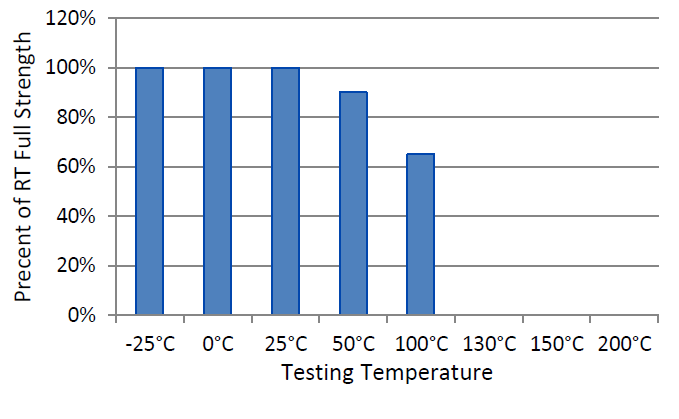Enhanced TDS
Identification & Functionality
- Chemical Family
- Product Type
- Technologies
- Product Families
Features & Benefits
- Ready-to-Use Product Features
- Features and Benefits
- Fluorescent UV Indicator
- Highly Resistant to Heat, Corrosion, Vibrations, Water, Gasses, Oils, Hydrocarbons, and Many Chemicals
- High Strength
- Medium Viscosity
Applications & Uses
- Markets
- Applications
- Application Area
- General Instructions
Surfaces to be bonded should be clean and dry and free of grease. Product should be applied in enough quantity to fill all engaged threads or gap. The product performs best in thin bond gaps. Very large gaps may create gaps that will affect the cure speed and overall strength. Good contact is essential. It is recommended to confirm compatibility of the product with all substrates prior to use. This product is not recommended for use with strong oxidizing materials. Where aqueous washing systems are used to clean the surfaces before bonding, these aqueous washes can affect the cure and performance of the adhesive. This product is not normally recommended for use on plastics, users must check compatibility of the product with such substrates.
Properties
- Color (Properties)
- Physical Form
- Chemical Resistance
Value Units Test Method / Conditions Room Temperature Strength (50% Water/50% Glycol, at 87°C, 1000h) 90.0 % - Room Temperature Strength (Unleaded gasoline, at 22°C, 1000 h) 100.0 % - Room Temperature Strength (Motor oil, at 125°C, 1000 h) 100.0 % - Room Temperature Strength (Brake fluid, at 125°C, 1000h) 100.0 % - Room Temperature Strength (Acetone, at 125°C, 1000 h) 95.0 % - - Cured Properties
Value Units Test Method / Conditions Service Temperature - 55 - 150 °C - Specific Heat 0.3 kJ/kgK - Coefficient of Thermal Expansion 80.0 ppm/K ASTM D696 Thermal Conductivity 0.1 W/m.K ASTM C177 Breakaway Torque 23 - 40 N-m ISO 10964 Breakloose Torque 28 - 48 N-m DIN 54454 Cure Speed (at 5°C, 25% of room temperature strength) 4.0 h - Cure Speed (at 5°C, 50% of room temperature strength) 6.0 h - Cure Speed (at 5°C, 100% of room temperature strength) 24 - 72 h - Cure Speed (at 40°C, 25% of room temperature strength) 12.0 min - Cure Speed (at 40°C, 50% of room temperature strength) 20.0 min - Cure Speed (at 40°C, 100% of room temperature strength) 2.0 h - Cure Speed on Steel (25% of room temperature strength) 1.0 min - Cure Speed on Steel (50% of room temperature strength) 2.0 h - Cure Speed on Steel (100% of room temperature strength) 15 - 72 h - Cure Speed on Brass (25% of room temperature strength) 3.0 h - Cure Speed on Brass (50% of room temperature strength) 5.0 h - Cure Speed on Brass (100% of room temperature strength) 20 - 72 h - Cure Speed on Zinc Dichromate (25% of room temperature strength) 1.0 h - Cure Speed on Zinc Dichromate (50% of room temperature strength) 2.0 h - Cure Speed on Zinc Dichromate (100% of room temperature strength) 15 - 72 h - - Damp Heat Aging Test Properties
Value Units Test Method / Conditions Heat Aging Testing (at 120°C, 3000 h) 60.0 % - Heat Aging Testing (at 150°C, 3000 h) 15.0 % - - Uncured Properties
Value Units Test Method / Conditions Set Time (Steel) 15.0 - - Flash Point min. 93 °C - Viscosity 6000 - 8000 cP - Specific Gravity 1.12 - - Full Cure Conditions 15 - 72 h - - Specifications
ASTM D-5363 AN 0211
Technical Details & Test Data
- Curing Performance
The rate of cure will depend on environmental conditions and the substrates used. The gap of the bond line will affect set speed. Smaller gaps tend to increase set speed. Activators may be applied to further improve set speed, but may also impair overall adhesive performance.
- Hot Strength (%RT strength, tested at temperature)

Packaging & Availability
- Regional Availability
Storage & Handling
- Shelf Life
- 12 Months
- Storage Conditions
- Storage Temperature: 8 to 28°C.
- Products should be stored unopened in a cool, dry place out of direct sunlight. Products may be refrigerated for improved shelf life, but should be brought back to room temperature before use.
